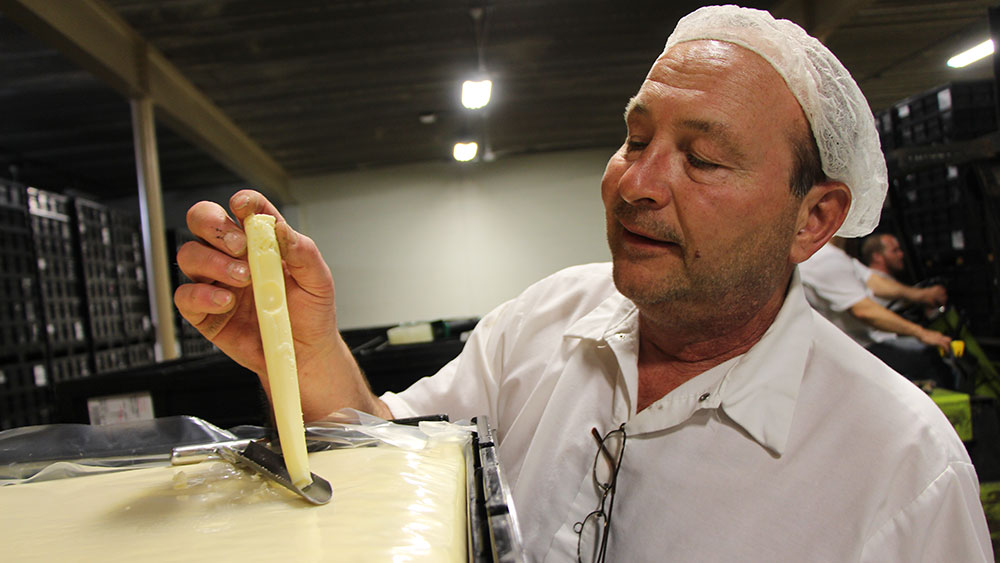Checking Out Melbourne Made Cheese: Why Floridia Cheese Is a Must-Try
Checking Out Melbourne Made Cheese: Why Floridia Cheese Is a Must-Try
Blog Article
Opening the Secrets of Artisanal Cheese Making: A Step-by-Step Do It Yourself Overview
In the world of cooking craftsmanship, artisanal cheese making stands as a testimony to the fragile balance in between practice and advancement. Each action in the process, from picking the best milk to improving aging techniques, holds within it a riches of expertise gave through generations. As we begin on this journey to demystify the art of creating splendid cheeses, we are faced with a tapestry of skills and secrets waiting to be unwinded. Join us as we discover the details of this ancient craft, where patience, art, and scientific research converge to create tastes that tantalize the senses.
Picking the Right Milk
When starting the trip of artisanal cheese production, the option of milk plays a crucial role in determining the top quality and features of the end product. The type of milk selected influences the flavor, appearance, and on the whole profile of the cheese. Raw milk, directly from the pet, is favored by lots of artisanal cheesemakers due to its distinct blend of enzymes, bacteria, and taste substances. However, using raw milk includes risks and guidelines, making pasteurized milk a much safer alternative for beginners.
When selecting milk for cheese production, it is essential to think about the fat content. Higher fat content in milk can result in a creamier and richer cheese, while lower fat material may bring about a drier and firmer structure. In addition, the resource of the milk, whether from cows, goats, sheep, or buffalo, contributes unique tastes and qualities to the cheese (Melbourne Made Cheese). Each kind of milk brings its own subtleties, permitting a vast array of cheese ranges to be crafted based upon the picked milk. Inevitably, the selection of milk is an essential decision that establishes the structure for an effective artisanal cheese-making endeavor.
Culturing and Coagulating
To launch the cheese-making procedure, the crucial actions of culturing and coagulating have to be thoroughly implemented to change milk into curds and whey. The type of society utilized can substantially impact the taste, appearance, and ripening of the last cheese item.

The timing and temperature level control throughout culturing and coagulation are vital elements that influence the final result of celebrity. Proper execution of these steps is necessary to make certain the desired appearance, taste, and consistency of the artisanal cheese being produced.
Draining and Pushing Curds
After the milk proteins have coagulated and the curds have been reduced to release whey, the next vital action in artisanal cheese making entails draining and pushing the curds to attain the desired texture and uniformity of the last cheese product. The time for draining can vary depending on the type of cheese being made and the preferred wetness material.
Pressing assists expel any kind of remaining whey and compacts the curds to form a strong cheese wheel. Correct draining and pressing are crucial steps that significantly influence the top quality and attributes of the artisanal cheese being created.
Aging and Flavor Methods
Applying precise aging and flavor techniques is critical in enhancing the deepness and complexity of artisanal cheeses, raising their taste profiles to elegant degrees of improvement blog and refinement. Aging plays an essential function in creating the special tastes and structures that identify artisanal cheeses. During the aging procedure, cheeses are stored in meticulously regulated environments where elements such as temperature, humidity, and air flow are manipulated to urge the development of helpful molds and bacteria. This controlled environment permits celebrity to mature gradually, developing intricate aromas and rich flavors.
Flavoring strategies also add significantly to the final taste of artisanal cheeses. Cheesemakers may choose to present added tastes by including components such as herbs, spices, or also fruits into celebrity during the manufacturing process. Additionally, some cheeses are cleaned or explanation rubbed with numerous fluids, such as brine or alcohol, to enhance their flavors and textures.
Wrapping and Saving Cheeses

Final Thought
Finally, mastering the art of artisanal cheese making involves very carefully picking the best milk, complying with exact culturing and coagulating processes, draining pipes and pressing curds effectively, and making use of different aging and flavoring methods. By complying with these steps carefully and with attention to detail, you can develop your very own delicious and distinct cheeses in the house. Remember to cover and store your cheeses correctly to ensure optimal flavor and appearance advancement. Pleased cheese making!
Each type of milk brings its own nuances, allowing for a vast array of cheese selections to be crafted based on the picked milk.After the milk proteins have coagulated and the curds have actually been reduced to launch whey, the next essential step in artisanal cheese making entails draining and pushing the curds to achieve the preferred structure and consistency of the last cheese product. The majority of cheeses need to be covered in wax paper or cheese paper to permit them to take a breath while securing them from drying out. For cheeses that require to proceed aging, such as bloomy peels or washed skins, ensure they are saved in a great environment like a cheese cave or a fridge set to the appropriate temperature level. By paying focus to the wrapping and storage of artisanal cheeses, cheese official statement makers and enthusiasts can protect the stability of these specials and totally enjoy their complicated tastes.
Report this page